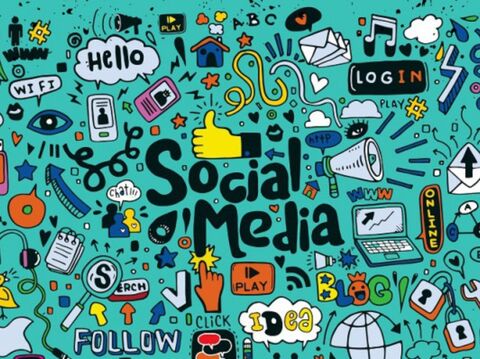AI-Orchestrated Dealer Ecosystems: The Future of Paint Distribution

India’s paint distribution model, once defined by manual dealer relationships and paper-based tracking, is now being reshaped by technology. As brands face shrinking margins and rising consumer expectations, the next leap forward lies in turning dealer networks into AI-orchestrated ecosystems—where data, automation, and intelligence replace guesswork and fragmentation.
The goal is not just to digitize processes but to create connected decision loops—where marketing signals, dealer inventory, and customer demand flow in real time.
Why the Paint Industry Needs AI Now
Despite digital advances in marketing and logistics, dealer management in paints remains one of the least optimized functions. Dealers often operate in silos with limited visibility into consumer leads or marketing ROI.
The result: missed opportunities, slow follow-ups, and poor attribution.
AI changes this paradigm. It allows brands to:
-
Predict dealer performance through demand modelling.
-
Automate lead routing based on geography, response time, and sales potential.
-
Optimize marketing spend by connecting ad performance with dealer-level conversions.
According to industry benchmarks, AI-led CRM integration can increase lead-to-sale conversion by 3–5x and reduce average response time by 70%.
AI in Action: Global and Indian Benchmarks
Globally, paint majors have already started embedding AI into their sales and service stack.
-
Sherwin-Williams PRO+ uses predictive analytics to match contractors with product demand.
-
Nippon Paint’s B2B Intelligence Hub uses AI to forecast dealer restocks.
-
Asian Paints has begun integrating AI-powered consumer segmentation into its digital CRM platform.
These examples highlight a strategic pattern: AI is no longer an experiment—it’s the new operational backbone.
From Manual Management to Intelligent Orchestration
Traditional dealer systems track sales; AI ecosystems synchronize sales with intent. The difference lies in intelligence.
AI platforms like Ottopilot enable brands to create real-time orchestration loops where:
-
Leads from digital campaigns auto-route to the nearest active dealer.
-
Dealers receive nudges based on lead age, potential value, and historical conversion trends.
-
Contractors get recommendations on repaint cycles through predictive models.
This turns what used to be a fragmented network into a living ecosystem of insights, actions, and results.
Quantifiable Business Impact
The transition to AI-orchestrated ecosystems produces measurable gains:
-
10x improvement in lead-to-sale conversion.
-
5x faster closures through automation and alerts.
-
3x increase in dealer lifetime value via predictive engagement.
-
25–30% higher ROI on marketing and sales initiatives.
For CXOs, the economic case is clear—AI doesn’t just optimize processes, it compounds value creation across the entire funnel.
Challenges and Enablers
While the benefits are compelling, CXOs must address key enablers:
-
Data unification: Consolidate siloed data across CRM, POS, and campaign systems.
-
Dealer readiness: Build training and adoption incentives.
-
Change management: Redefine KPIs to align with predictive, not reactive, metrics.
In parallel, governance around data privacy and transparency must evolve to ensure trust between dealers, contractors, and consumers.
Strategic Implications for CXOs
AI orchestration changes how leadership thinks about growth. Instead of managing distributors, CXOs must now design ecosystems—systems that learn, adapt, and scale automatically.
The future leadership playbook for paints will depend on three core capabilities:
-
Unified Data Infrastructure – A single source of truth connecting all demand and supply signals.
-
Predictive Intelligence – Using machine learning to pre-empt demand and automate fulfilment.
-
Systemic Agility – Continuous optimization across marketing, sales, and service cycles.
Conclusion: The New Paint Playbook
AI-orchestrated ecosystems are redefining what “distribution” means in the paint industry. The winners will be brands that evolve from pushing paint to predicting demand and fulfilling it before competitors react.
The true advantage lies in speed, personalization, and precision—hallmarks of an intelligent enterprise.
At GrowthJockey, we help enterprises embed AI-first frameworks into their business models. Our proprietary platforms, Intellsys.ai and Ottopilot, unify data streams, automate lead management, and empower CXOs to make faster, smarter decisions. We partner with brands to design ecosystems that scale from insight to impact.
FAQs
Q1. What is an AI-orchestrated dealer ecosystem?
Ans. It’s a connected network where AI and automation unify dealer operations, consumer leads, and marketing performance for real-time decision-making.
Q2. How does AI improve dealer performance?
Ans. AI predicts demand, automates lead routing, and provides real-time insights—reducing delays and increasing closure rates.
Q3. Are there global examples of this model?
Ans. Yes—Sherwin-Williams, Nippon Paint, and Asian Paints have already begun implementing predictive CRM and AI orchestration models.
Q4. What are the measurable business benefits?
Ans. Brands see up to 10x conversion improvement, 5x faster dealer closures, and 25–30% ROI growth within a year.
Q5. How can CXOs begin this transition?
Ans. Start by centralizing data, digitizing dealer touchpoints, and deploying orchestration platforms like Ottopilot that connect marketing, sales, and service in real time.








